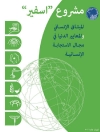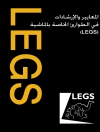Michael P. Richards and Jean-Jacques Hublin The study of hominin diets, and especially how they have (primates, modern humans), (2) faunal and plant studies, (3) evolved throughout time, has long been a core research archaeology and paleoanthropology, and (4) isotopic studies. area in archaeology and paleoanthropology, but it is also This volume therefore presents research articles by most of becoming an important research area in other fields such as these participants that are mainly based on their presentations primatology, nutrition science, and evolutionary medicine. at the symposium. As can hopefully be seen in the volume, Although this is a fundamental research topic, much of the these papers provide important reviews of the current research research continues to be undertaken by specialists and there in these areas, as well as often present new research on dietary is, with some notable exceptions (e. g. , Stanford and Bunn, evolution. 2001; Ungar and Teaford, 2002; Ungar, 2007) relatively lit- In the section on modern studies Hohmann provides a tle interaction with other researchers in other fields. This is review of the diets of non-human primates, including an unfortunate, as recently it has appeared that different lines interesting discussion of the role of food-sharing amongst of evidence are causing similar conclusions about the major these primates. Snodgrass, Leonard, and Roberston provide issues of hominid dietary evolution (i. e.
Mục lục
The Diets of Non-human Primates: Frugivory, Food Processing, and Food Sharing.- The Energetics of Encephalization in Early Hominids.- Meals Versus Snacks and the Human Dentition and Diet During the Paleolithic.- Modern Human Physiology with Respect to Evolutionary Adaptations that Relate to Diet in the Past.- Hunting and Hunting Weapons of the Lower and Middle Paleolithic of Europe.- Neanderthal and Modern Human Diet in Eastern Europe.- Hominin Subsistence Patterns During the Middle and Late Paleolithic in Northwestern Europe.- Late Pleistocene Subsistence Strategies and Resource Intensification in Africa.- Seasonal Patterns of Prey Acquisition and Inter-group Competition During the Middle and Upper Palaeolithic of the Southern Caucasus.- Epipaleolithic Subsistence Intensification in the Southern Levant: The Faunal Evidence.- Paleolithic Diet and the Division of Labor in Mediterranean Eurasia.- Moving North: Archaeobotanical Evidence for Plant Diet in Middle and Upper Paleolithic Europe.- Diet in Early Hominin Species: A Paleoenvironmental Perspective.- The Impact of Projectile Weaponry on Late Pleistocene Hominin Evolution.- The Evolution of the Human Capacity for “Killing at a Distance”: The Human Fossil Evidence for the Evolution of Projectile Weaponry.- An Energetics Perspective on the Neandertal Record.- ?13C Values Reflect Aspects of Primate Ecology in Addition to Diet.- Increased Dietary Breadth in Early Hominin Evolution: Revisiting Arguments and Evidence with a Focus on Biogeochemical Contributions.- Neanderthal Dietary Habits: Review of the Isotopic Evidence.- Stable Isotope Evidence for European Upper Paleolithic Human Diets.- Erratum.
Giới thiệu về tác giả
Jean-Jacques, Hublin, Ph.D., is currently a Professor at the Max Planck Institute for Evolutionary Anthropology in Leipzig (Germany), where he also serves as the Director of the Department of Human Evolution. Initially his research focuses on the origin and evolution of Neanderthals and he has proposed an accretion model for the emergence of the Neandertal lineage that roots it in time in the middle of the middle Pleistocene. He also worked on the processes associated with the emergence of Homo sapiens and on the interactions between Neanderthals and anatomically modern humans in Europe. He developed the use of medical and virtual imaging in the reconstruction and study of fossil hominids and paid attention to the growth and development issues. He has led field operations in North Africa, Spain and France. In addition to his scientific papers, he has regularly published popular books (with translations in English, Italian, Spanish and Chinese) and articles on the subjects of Neanderthal and early modern human evolution. Significant past research and teaching appointments include: Deputy Director for Anthropology, Prehistory and Paleo-environmental Sciences, Centre National de Recherche Scientifique (2000-2003), Researcher, Centre National de Recherche Scientifique (1981-2000), Visiting Professor, University of California at Berkeley (1992), Harvard University (1997) and Stanford University (1999), Elected member of the French National Committee of Scientific Research (1991-2000)., Ph.D., is currently a Professor at the Max Planck Institute for Evolutionary Anthropology in Leipzig (Germany), where he also serves as the Director of the Department of Human Evolution. Initially his research focuses on the origin and evolution of Neanderthals and he has proposed an accretion model for the emergence of the Neandertal lineage that roots it in time in the middle of the middle Pleistocene. He also worked on the processes associated with the emergence of Homo sapiens and on the interactions between Neanderthals and anatomically modern humans in Europe. He developed the use of medical and virtual imaging in the reconstruction and study of fossil hominids and paid attention to the growth and development issues. He has led field operations in North Africa, Spain and France. In addition to his scientific papers, he has regularly published popular books (with translations in English, Italian, Spanish and Chinese) and articles on the subjects of Neanderthal and early modern human evolution. Significant past research and teaching appointments include: Deputy Director for Anthropology, Prehistory and Paleo-environmental Sciences, Centre National de Recherche Scientifique (2000-2003), Researcher, Centre National de Recherche Scientifique (1981-2000), Visiting Professor, University of California at Berkeley (1992), Harvard University (1997) and Stanford University (1999), Elected member of the French National Committee of Scientific Research (1991-2000).
Michael P. Richards is a Professor at the Department of Human Evolution where he runs the archaeological science group. His research interests primarily involve isotope analysis in archaeology, palaeoanthropology and palaeontology, especially for reconstructing past diets and migration patterns. Most of his research has involved the application of stable isotope analysis (C and N) of bone collagen to determine human and animal diets, and especially diet shifts, in Prehistoric and Historic Europe. Particular areas of interest are the shift in diet between the Mesolithic and Neolithic periods in Europe, associated with the adoption of agriculture, and contrasting the diets of Neanderthals and modern humans in Europe. Mike’s current research involves the use of other isotopes to reconstruct climate and migration patterns, as well as the extraction and isotopic analysis of proteins preserved in old or poorly preserved bone and teeth. Mike studied at the Department of Archaeology, Simon Fraser University, Canada (BA and MA), and the Research Laboratory for Archaeology and the History of Art, University of Oxford, UK (Ph.D.). He held post-doctoral positions at both institutions. He was a Lecturer, Reader and Professor at the Department of Archaeological Sciences, University of Bradford, UK, a position mainly funded by the Wellcome Trust Bioarchaeology programme. In addition to his current post as Professor at the MPI in Leipzig, he also holds a part-time post at the University of Durham, UK, as Professor of Archaeology. Mike’s research has been published in journals such as Nature, PNAS, AJPA, JAS, and Current Anthropology. is a Professor at the Department of Human Evolution where he runs the archaeological science group. His research interests primarily involve isotope analysis in archaeology, palaeoanthropology and palaeontology, especially for reconstructing past diets and migration patterns. Most of his research has involved the application of stable isotope analysis (C and N) of bone collagen to determine human and animal diets, and especially diet shifts, in Prehistoric and Historic Europe. Particular areas of interest are the shift in diet between the Mesolithic and Neolithic periods in Europe, associated with the adoption of agriculture, and contrasting the diets of Neanderthals and modern humans in Europe. Mike’s current research involves the use of other isotopes to reconstruct climate and migration patterns, as well as the extraction and isotopic analysis of proteins preserved in old or poorly preserved bone and teeth. Mike studied at the Department of Archaeology, Simon Fraser University, Canada (BA and MA), and the Research Laboratory for Archaeology and the History of Art, University of Oxford, UK (Ph.D.). He held post-doctoral positions at both institutions. He was a Lecturer, Reader and Professor at the Department of Archaeological Sciences, University of Bradford, UK, a position mainly funded by the Wellcome Trust Bioarchaeology programme. In addition to his current post as Professor at the MPI in Leipzig, he also holds a part-time post at the University of Durham, UK, as Professor of Archaeology. Mike’s research has been published in journals such as Nature, PNAS, AJPA, JAS, and Current Anthropology.












